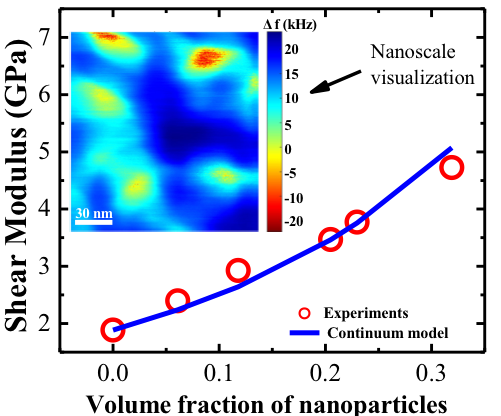- Materials
- Chemistry and Physics at Interfaces
- Functional Materials for Energy
- Materials Characterization

Scientists have unraveled details of the mechanism of mechanical reinforcement in glassy polymer nanocomposites.1 Measurements in the interfacial layer ~2–4 nm around nanoparticles revealed that Young’s modulus, which defines the relationship between stress and strain in a material, is two times higher than in the bulk polymer. The studies revealed that stretching of the polymer chains in the interfacial region plays the key role in the observed enhancement of stiffness. This finding provides guidance for rational design of polymer nanocomposites with advanced mechanical properties by tuning the interfacial layer structure.
Through a combination of advanced atomic force microscopy, small angle X-ray scattering and Brillouin light scattering techniques applied to model polymer nanocomposites, they have visualized the interfacial region ~2–4 nm around the nanoparticles and demonstrated it has twice the stiffness of the polymer matrix. The results demonstrate a methodology to study mechanical properties on the nanoscale and highlight the role of interfacial layer chain stretching in the overall mechanical reinforcement of nanocomposites. The work can guide the design of polymer nanocomposites with desired mechanical properties.







